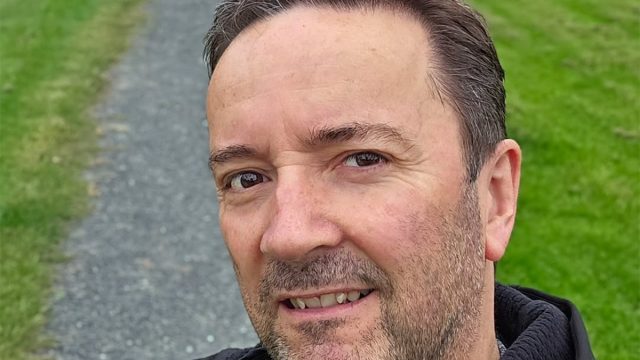3 Best Times to Walk to Burn More Fat According to Running Expert

We all know walking is good for us, but timing can make all the difference when it comes to fat loss. Steve Garrett from Dynamic Running Fitness, a seasoned running coach, reveals that certain times of day can significantly boost your walking workout's fat-burning potential. Drawing from his extensive experience in fitness training, he shares the science behind why these specific walking times can help maximize your results.
Early Morning Walk Before Breakfast
While getting out of bed for an early morning walk might not sound appealing, Steve explains why it's worth the effort: "When you're asleep, you're in what's called a naturally fasted state." During this time, your body has already processed your last meal and is primed for fat burning. The key is keeping it gentle – Steve recommends a 10-30 minute easy walk before breakfast.
Why Morning Walks Work Better Than Post-Breakfast
https://www.instagram.com/p/Cmt3WFltter/?utm_source=ig_embed&utm_campaign=loading
"If you get out of bed and then have breakfast," Steve warns, "what's actually going to happen then is you're going to up your blood sugar and that's going to release insulin which is going to effectively block any fat burning." By walking before breakfast, you maintain your body's natural fat-burning state. "If you keep the walk nice and gentle, nice and relaxed, it's going to rely mainly on fat stores," he emphasizes.
RELATED: 12-3-30 Walking Method: 20 Proven Tips to Lose Weight Faster
Hourly Walks During Your Workday
https://www.instagram.com/p/CYTlgInjd1X/?utm_source=ig_embed&utm_campaign=loading
For office workers, Steve identifies a crucial opportunity for fat burning through movement breaks. "As we sit for extended periods of time, the body is going to start switching off," he explains. His solution? A five-minute walk every hour. While it might seem minimal, these short walks add up significantly over the day.
The Office Chair Problem
https://www.instagram.com/p/CYTk-mUjQxl/?utm_source=ig_embed&utm_campaign=loading
"When you're in a nice, comfortable office chair," Steve points out, "your skeleton, your muscles are all saying, well, I don't need to be supporting my frame anymore. I'll let the chair do it." This leads to muscle disengagement and poor posture. "It's very difficult to walk with bad posture," he notes, "but it's very easy to sit with bad posture."
Making the Most of Lunchtime Walks
https://www.instagram.com/reel/CZzRT_2lYOm/?utm_source=ig_embed&utm_campaign=loading
Steve recommends extending your midday movement: "If you can get out for a 15, 20 or even 30 minute walk after you've had something to eat, all the better, because that's going to help not only increase the step count and more noticeable calorie burn, but also it's going to help get the insulin back under control."
Post-Dinner Evening Walk
https://www.instagram.com/p/Cc7_giaNg6-/?utm_source=ig_embed&utm_campaign=loading
The final crucial walking time comes after your evening meal. "For most people, your evening meal is the biggest meal of the day," Steve points out. "It may be the most calorie laden meal of the day if you've been a little bit indulgent." This timing is particularly effective because your blood sugar will be elevated from your largest meal.
RELATED: 8 High-Protein Foods with Nearly Zero Calories That Melt Fat
The Evening Walk-Sleep Connection
https://www.instagram.com/p/DBvxCp2tWQP/?utm_source=ig_embed&utm_campaign=loading
An evening walk helps prepare your body for optimal fat burning during sleep. "Going out for a good 30 minutes, if you can get an hour's walk in, then you're going to really help control, bring that blood sugar down, keep that insulin under control and get the body back closer into its fasted state for when you go to bed, which is when the fat burn is going to happen."
Digestive Benefits of Evening Walk
https://www.instagram.com/p/Cg6RjZaIESx/?utm_source=ig_embed&utm_campaign=loading
"After a big meal, I'm sure we've all from time to time felt that little bit full, that little bit bloated," Steve acknowledges. "As you walk, the movement, the motion of the body is just helping things… keeping everything regular. Your digestion is going to improve."
Stress Management and Mental Well-being
https://www.instagram.com/p/CgygEOZLDO6/?utm_source=ig_embed&utm_campaign=loading
Evening walks serve another crucial purpose. "Walking outside in fresh air has been proven to help bring stress levels down," Steve shares. "That's going to improve your mental well-being. You may have had a stressful day at work." This stress reduction is crucial since stress can trigger cortisol release, which may interfere with fat loss.
RELATED: 7 Simple Daily Exercises To Shrink Hanging Belly Fat
Setting Up for Better Sleep
https://www.instagram.com/reel/ChWo1akFY36/?utm_source=ig_embed&utm_campaign=loading
"A good night's sleep," Steve emphasizes, "is one of the best ways to burn fat, a body in a nice, relaxed state, low stress, good quality sleep. It's going to really aid any kind of fat loss." By timing your evening walk properly, "you're going to set yourself up for a good night's sleep."
Getting Started With Timed Walks
https://www.instagram.com/p/CoSwU9wsqQs/?utm_source=ig_embed&utm_campaign=loading
Start by incorporating just one of these walking times into your daily routine. Choose whatever feels most manageable – whether that's morning walks, brief hourly walks, or evening strolls. The key is consistency rather than perfection. As Steve suggests, consider using an app to track your progress and maintain motivation.
Don't forget that walking intensity matters too. For optimal fat burning, keep your walks at a comfortable pace where you can easily hold a conversation. As Steve emphasizes, maintaining a gentle, relaxed pace, especially during morning walks, helps ensure your body primarily uses fat for fuel. And if you enjoyed this article, take advantage of these 15 Quick Ways to Lose Body Fat Percentage in a Week.




